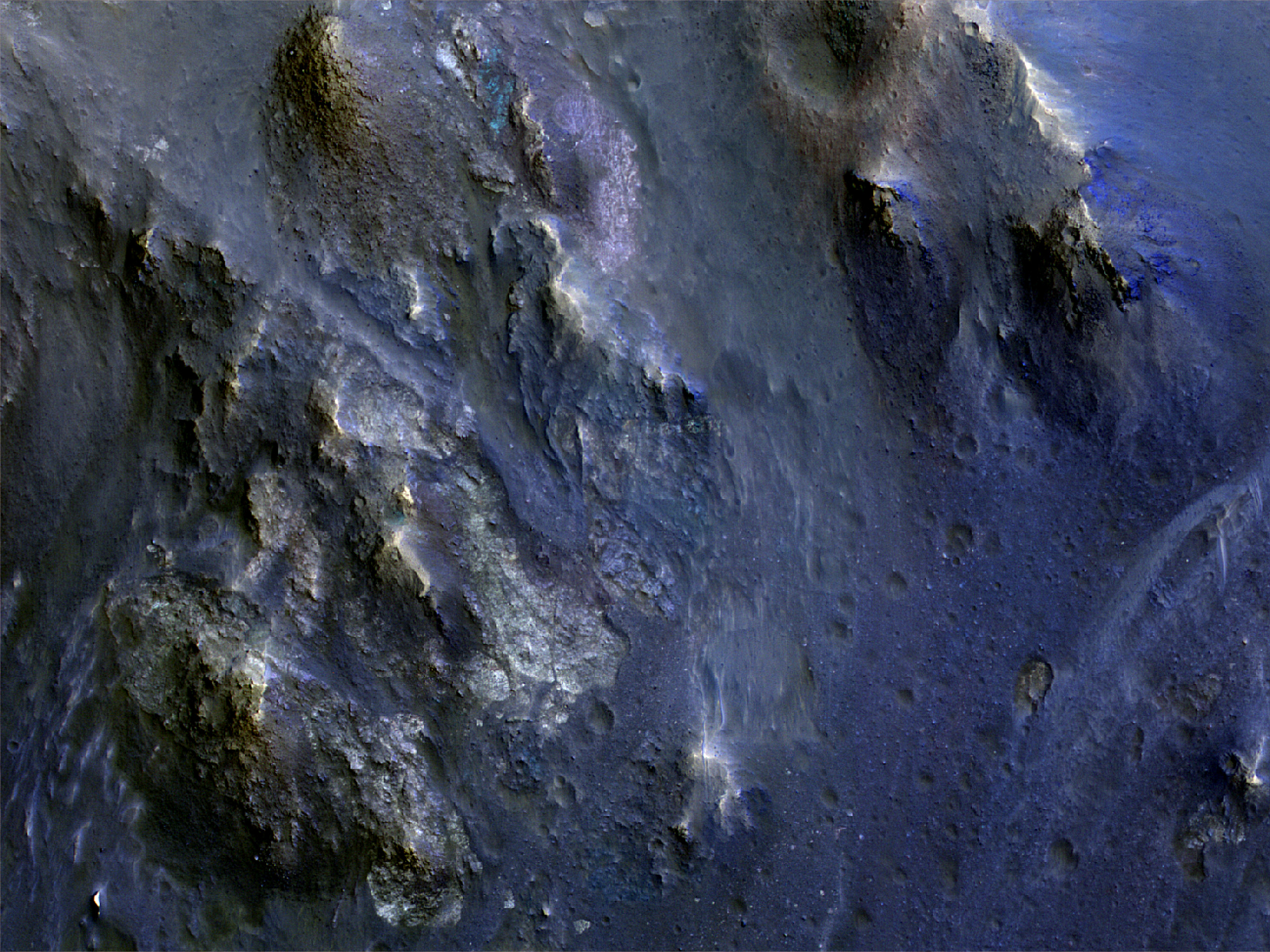Crater formation is a dynamic process that unleashes a powerful shock wave that can vaporize and melt rock, in addition to displacing the surface to create the initial crater-cavity. Larger craters (more than 10 kilometers) may exhibit a central structure that is formed by uplifting and exposing bedrock from the subsurface.
This 47-kilometer (29 mi) diameter crater in Eos Chasma exhibits a central uplift comprised of well-exposed fractured bedrock. HiRISE color imaging reveals fine-scale details in addition to
two other key features observed at crater central uplifts. Here, we see impact melts coating the uplift, which when molten, would have flowed downslope and been “captured” by the uplifted bedrock as it rose through the melt-lined cavity early in the crater’s formation. We also see rock fragments (also known as clasts) that would have been incorporated into the melt at various stages.
HiRISE details not only offer insights into subsurface composition and regional geologic history, but also about impact cratering and uplift formation process in general.
ID:
ESP_013573_1685date: 19 June 2009
altitude: 264 km
https://uahirise.org/hipod/ESP_013573_1685
NASA/JPL-Caltech/University of Arizona
#Mars #science #NASA
